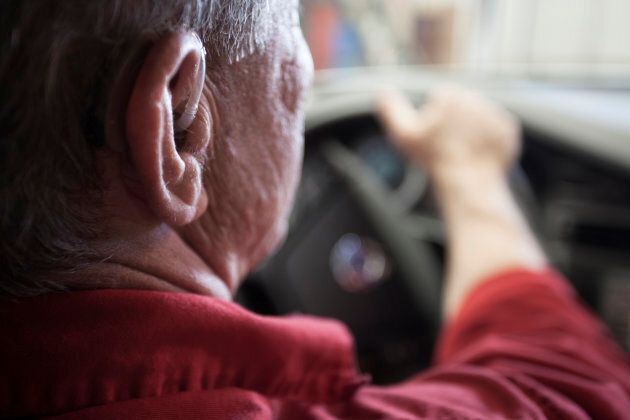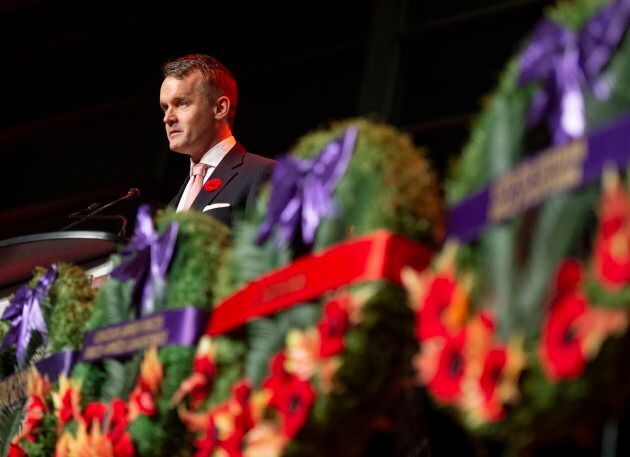Veterans Affairs is not in the business of taking care of veterans. That's the inescapable conclusion.
Whatever the motivation behind the inception of benefits for injured veterans was, the current purpose of VAC is to give the appearance of helping veterans, while saving and returning as much funds as possible to the government. The department exists primarily to support politicians in their claims that they deeply care about veterans. In reality, providing for veterans is way down the list.

One need only look at the actual delivery of service to veterans to see: long processing times (which are getting even longer); funds allocated to VAC programs being returned unspent — to both Liberal and Conservative governments; the current government's plan to restore lifelong pensions will actually save it money; even the way that government will fix an error that takes money out of veterans' pockets — but refuse to give the money back.
'Money Ottawa actually can afford but chooses not to spend'
Until very recently, no government was ever open and honest enough to say that veterans are too expensive, even though governments continually find ways to game the system against veterans.
When asked about veterans suing over their lump-sum awards, Trudeau was honest enough to say that veterans suing over payments want more than Ottawa can afford. Honest — in that he no doubt believes that. However, the amount of funds regularly returned unspent from VAC would indicate that there's enough money already available. Money Canada actually can afford but chooses not to spend.
I doubt that we really know the true cost of providing for veterans. Yes, there are budgets, but determining the true cost requires more than dividing the spending estimates by the number of veterans. It needs data on multiple factors from several department — departments like Public Safety and National Defence, which don't particularly enjoy public scrutiny.
Take this example — hearing damage. According to the Veterans Review and Appeal Board (VRAB), tinnitus and hearing loss were two of the top six issues 2016-17. Clearly, anyone involved with regularly using firearms, being around artillery or heavy weapons or grenades, or being regularly exposed to closed engine rooms or airplane engines — in other words, most of the military — is likely to experience hearing troubles.

Take Stan Jones, with over two decades in a naval engine room. VAC says his deafness is miraculously healed. Or MWO Richard Leslie, completely deaf on the right, partially on the left, the result of artillery and explosions during the Second World War. VAC says that service during war wasn't enough to cause permanent damage. Both have gone through the cycles of deny-appeal-repeat.
The process goes like this: a veteran endured the various level high noises in service, he is partially deaf and needs hearing aids. He applies to VAC and is denied coverage on the basis that his deafness may have been caused by power tools or other sources outside of the military.
The vet obtains another hearing exam, and another report, and requests a review by the Veterans Review and Appeals Board. Again, denied, again, not service-related.
Appeal back to VRAB, denied. Appeal to Supreme Court. The Court rules that enough evidence has been provided to support the veterans' claim, and orders VRAB to take another look (the Court can't actually approve the benefits, only order a review). Then the process starts all over again.
(I know of at least one veteran who has appealed up to the Court three times trying to get hearing aids.)
The real cost of supporting veterans
What is the actual cost of that? Some may cite the VRAB budget divided by number of appeals heard. That's a quick answer, but by no means comprehensive.
The real cost would have to include, at minimum: cost of medical assessment and reports, cost of each individual VAC employee involved in processing the claim, cost of VRAB appeals, cost of lawyers involved for both the veteran and VAC, and Court costs. All multiplied by the number of trips on the merry-go-round. Measure that against the cost of hearing aids — say $5,000 every three to five years.

Surely, it would be far cheaper to simply approve hearing aids for all veterans; likewise, for all of the top six issues VRAB faces, including hearing issues, back-knee-neck damage and PTSD/Depression. Common conditions, easily associated with service. Approve the benefits in the first place and all those funds currently spent saying "no" could go back into providing for veterans.
Like VAC is supposed to.
Recently Parliament unanimously passed a motion to stop VAC from returning unspent funds. It sounds like an excellent idea, but the motion specifies that unspent funds, rather than being dispersed as intended, can instead be used for meeting service targets such as staff training or more employees. Plus, the Treasury Board could simply deduct the same amount from future VAC budgets. The motions are not enforceable, nor legal obligations, as we've seen with the Sacred obligation motion.
More blogs from HuffPost Canada:
This time of year, Ottawa makes a big show of how dedicated government is to looking after our veterans. The fact remains that Government plays shell games with VAC funds, while telling everyone how much they care about veterans. When they are pressed for answers, Ottawa claims there isn't enough money, that wounded veterans are asking for more than we can give.
How much can Canada afford? We don't know. How much is Canada spending? We don't know. How much do we care about those who sacrifice so much for Canada?
That we do know.
Not much.
Have you been affected personally by this or another issue? Share your story on HuffPost Canada blogs. We feature the best of Canadian opinion and perspectives. Find out how to contribute here.
Also on HuffPost: